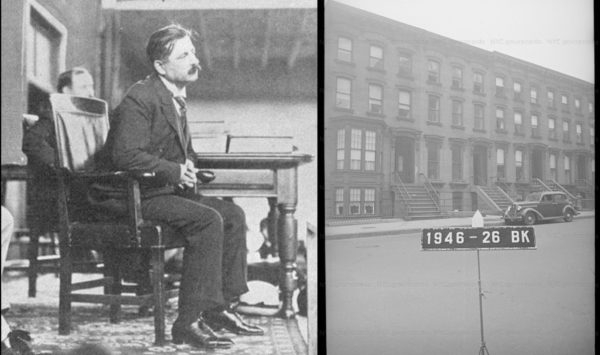“DR. SEUSS” ON A CLINTON HILL BROWNSTONE
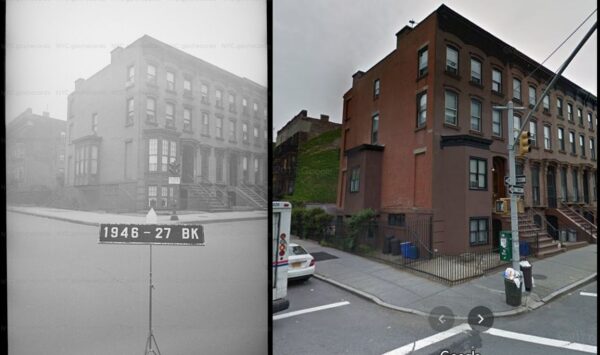
******************************************************************************************************************************** Brownstone Detectives investigates the history of our clients’ homes. The story you are about to read was composed from research conducted in the course of one of those investigations. ******************************************************************************************************************************** What happened here, It is not clear. Some window bays Have lost their glaze. I wonder why They had to nix it. For it wern’t broke, So t’wern’t to fix it. – Dr. Seuss, on the bay windows of No. 280 Lafayette Ave, Clinton Hill, Brooklyn. Follow @BrownstoneDetec Share ———————————————————————————————————————– The Brownstone Detectives Brownstone Detectives is a property research agency. Our mission is to research, document, and save the histories of our clients’ historic properties. From this research, we produce our celebrated House History Books. Each book is fully cited, featuring detailed narratives and colorful graphics, and is designed to bring the history of any house to life. Contact us today to begin discovering the history of your home.
HOW YOUR BROWNSTONE LOST ITS SOUL (1915)
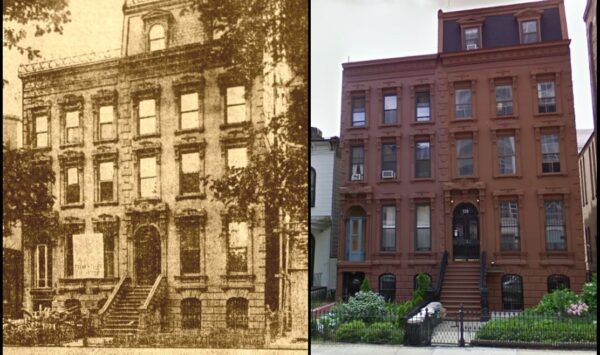
******************************************************************************************************************************** Brownstone Detectives investigates the history of our clients’ homes. The story you are about to read was composed from research conducted in the course of one of those investigations. Do you know the history of YOUR house? ******************************************************************************************************************************** It started just 20 years after construction began on “Brownstone Brooklyn” – our brownstones and townhouses began to lose their “souls.” Constructed in a time when owners needed three and four stories of room for large families, they had, in those times, existed as the epitome of style and class. Now that so much square footage so close to the city center was becoming too dear for so many residents (who did not have families or who needed much less room), builders were beginning to construct large apartment houses that provided all of the necessities of home within a smaller, but more stylish and efficiently laid out, space. Such competition from newer construction caused the formerly beloved brownstone to lose its lucrative “soul.” THE SOLUTION TO ANTIQUITY In 1915, real estate broker Frank Tyler struck upon an idea that turned out to be, in essence, a paradigm change: Take an old inefficient brownstone and turn it into a stylish and updated apartment house. Tyler noticed that “the average three-story and basement dwelling of old-fashioned style” had “become a drag on the real estate market.” Because of “great changes that have taken place in construction, and the popularity of apartment house living,” brownstone owners had been experiencing a decline in the rental […]
THE DELIGHT OF A CLINTON HILL BOY (1945)
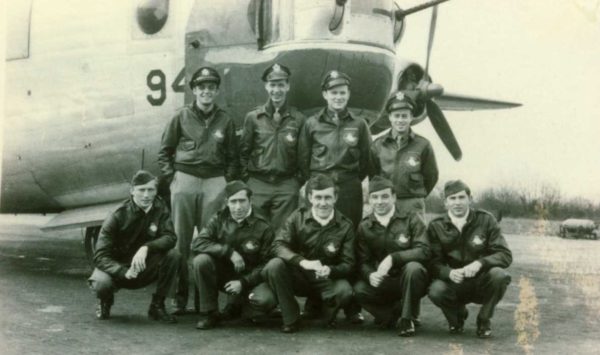
******************************************************************************************************************************** Brownstone Detectives investigates the history of our clients’ homes. The story you are about to read was composed from research conducted in the course of one of those investigations. Do you know the history of YOUR house? ******************************************************************************************************************************** (The following is an excerpt from the Brownstone Detectives House History Book, No. 241 Washington Avenue – The Story of a House.) On a cloudy windy December evening, the crew of the B-24 Liberator “Beaver’s Baby,” flying at an altitude of 23,000 feet, neared the Belgian border. On the return leg of a bombing mission over Hanau, Germany, the plane’s pilot, Captain Clarence “Bart” Barton, had a crucial decision to make. Their heavy bomber had lost an engine and, according to the Barton, “another was almost gone.” It was clear, he decided, that they would be unnecessarily risking their plane and crew if they attempted a channel crossing considering their plane’s condition. Barton thus alerted his men that they were going to have to make a forced landing somewhere. He, thus, directed his navigator, 18-year-old Lieutenant Robert F. Palestri, to identify the coordinates of the nearest friendly airfield and to guide them to that location. Nearing Belgian soil, after hours of flying over Germany, the crew’s navigator oriented the pilot toward what appeared to be a dark Belgian runway many thousands of feet below them. With the coordinates to guide them, the pilot began inching his aircraft downward. As they dropped altitude and their bomber began to approach the general location […]
B’KLYN GALS SEEK LEAP YEAR COWBOYS (1912)
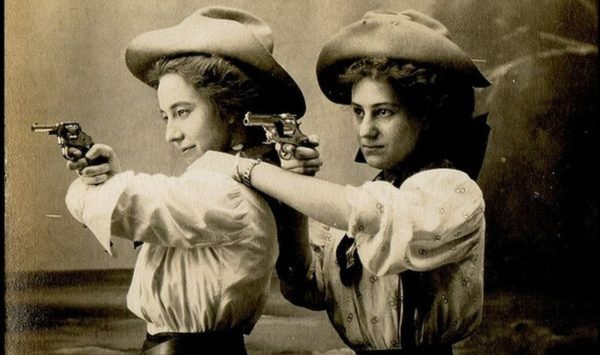
******************************************************************************************************************************** Brownstone Detectives investigates the history of our clients’ homes. The story you are about to read was composed from research conducted in the course of one of those investigations. Do you know the history of YOUR house? ******************************************************************************************************************************** “Come on boys; don your riding chaps, brush up your sombrero and dig out your rusty six-shooter and look-like a moving picture hero!” So started the article in the Sacramento Bee in April of 1912 about two Brooklyn sisters who were looking far afield for long-distance leap year affairs. Alma and Lou Bahn of 546 Washington Avenue, a boarding house between Fulton Street and Atlantic Avenue known as The Berwick, were taking this leap year business seriously, it seemed, and the men of the borough of Brooklyn, it seemed, could not hold down the sisters’ adventuresome spirits. “They want to correspond with you and perhaps the corresponding may lead to love and to the altar,” continued the Bee story. “The girls apparently realize that California is overrun with cowboys and that some of them are so dare devil and roguish that they buy their chewing gum in cigar stores,” continued the Bee. “Therefore, they ask for the names of several in order that they can each pick out a ‘nice’ cowboy and not a Black Bart the second or a California Jesse James. “The Brooklyn belles do not give their ages, but their pictures indicate that they are, or were, young. That they are not idle flirts seeking to catch some […]
“MORALS OF MINNIE” ON GARFIELD PL. (1912)
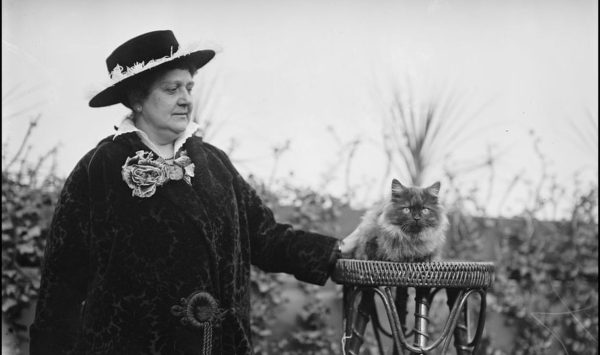
******************************************************************************************************************************** Brownstone Detectives investigates the history of our clients’ homes. The story you are about to read was composed from research conducted in the course of one of those investigations. Do you know the history of YOUR house? ******************************************************************************************************************************** In 1912, a Park Slope cat named Minnie found herself in some hot water. According to a complaint, Minnie’s claws had allegedly performed some serious mutilation to a neighbor’s roof. Here, now, are the details of: THE CURIOUS CASE OF THE CAT THAT CLAWED Location – Garfield Place (between 6th and 7th avenues). Suspect’s address – No. 182 Garfield Place, the Inasmuch Home for Aged Women. Claimant’s address – No. 178 Garfield Place, home of one William Albert Robbins, attorney. Suspect – one “Minnie,” a white Persian, and allegedly “immoral,” cat. THE WANDERINGS OF THE “INASMUCH” Around 1909, the Inasmuch Home for Aged Women moved from its previous location on Bergen Street to its new home at No. 182 Garfield Place in Park Slope between 6th and 7th Avenues. The Inasmuch (sometimes referred to as the “In-As-Much” by sloppy journalists) was a “charity” home for “aged women who are unable to get into other homes,” run through contributions and donations. It was founded in 1905, a few years before the move to Garfield Place. At that time, it existed in the Gowanus at No. 390 Douglass Street, and later moved to (what would become) the Boerum Hill section at No. 226 Bergen Street. By 1920, when it was finally closed, the […]
ANALYZING A QUINCY STREET VICTORIAN (1902)
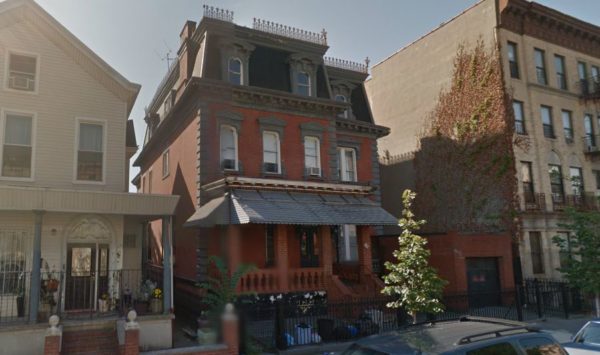
******************************************************************************************************************************** Brownstone Detectives investigates the history of our clients’ homes. The story you are about to read was composed from research conducted in the course of one of those investigations. ******************************************************************************************************************************** In 1902, Quincy Street, between Bedford and Nostrand avenues, had become a leader in the Bedford District in block beautification initiatives. A forerunner to the Greenest Block campaign that would come 70 years later, the campaign in 1902 would be called “Block Beautiful.” Because the campaign had become so popular that year, this block of Quincy Street would have a number of pictures of its houses published in the Brooklyn Daily Eagle. Here we have three shots of 186 Quincy Street – the home of Daniel Winant (a dealer in hotel and steamship food supplies) – which the Eagle called “the old Joseph C. Hoagland residence.” It was, they noted, a “double mansion of red brick, with a large lawn on one side, one of the finest of Hill residences.” So apparently, even back then, Clinton Hill was encroaching upon the Bedford section. 😉 The first picture, above, is a Google Maps northwest facing view of the house is from 2014; that is followed below by two more shots – a newspaper photograph from 1902, and then, another Google Maps shot from 2016. WHAT DIFFERENCES DO YOU NOTICE BETWEEN THE FOLLOWING TWO PICS!?!? Follow @brownstonedetec Share ———————————————————————————————————————– The Brownstone Detectives Brownstone Detectives is an historic property research agency. Our mission is to document and save the histories of our […]
GOD’S OIL & LUBE SHOP (1903)
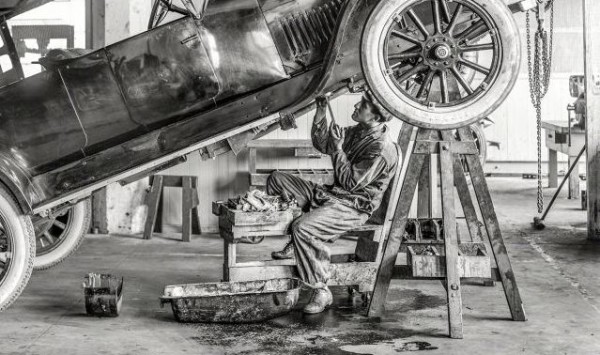
******************************************************************************************************************************** Brownstone Detectives investigates the history of our clients’ homes. The story you are about to read was composed from research conducted in the course of one of those investigations. Do you know the history of YOUR house? ******************************************************************************************************************************** By 1903, builder Wilfred Burr had moved into his second decade of house building, putting up brownstones and limestones around Stuyvesant Heights at a quick clip. Within his first decade in the profession he had managed to build hundreds of them. He was just 35, and was living with his wife, son, two daughters, and his mother-in-law (and two Swedish servants) at 555 Jefferson Avenue, but he was starting to become restless with the monotony. Able to purchase lots, put up buildings and sell them – almost with his eyes closed by this point – he began to look for something additional to do with his life outside of the construction business, seeking some way to spend his expendable income on an investment that excited him – something that was new and different. The new automobiles held that cache. They were fast, they were complicated – and his wife did not like him driving them. BUILDING THE AUTOMOBILE At some point, Wilfred and one of his bowling partners, secretary of the St. James Bowling Club, Robert W. Haff, had hatched the idea to bring a new and exciting automobile company to Brooklyn. This new-fangled piece of machinery was in its infancy, but more and more people – especially those with expendable […]
“HE CAME TO FIX THE ELECTRIC WIRE” (1938)
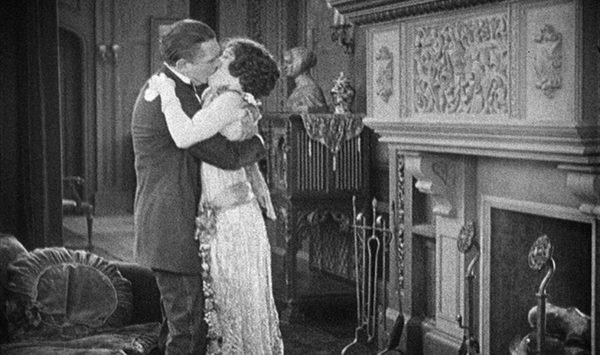
******************************************************************************************************************************** Brownstone Detectives investigates the history of our clients’ homes. The story you are about to read was composed from research conducted in the course of one of those investigations. Do you know the history of YOUR house? ******************************************************************************************************************************** “And if thow take a wyf unto thyn hoold, Ful lightly maystow been a cokewold.” With these words – and others – the Wife of Bath, in Shakespeare’s “Chaucer,” attempted to secure the hand of the knight by frightening him with the possibility of becoming a cuckold, a man whose wife is sexually unfaithful. The word has survived down the ages used in most derisive ways, but mostly as a lesson that men should pay more attention to their wives and take caution, particularly if they are pretty, that they do not “wander.” In 1938, this very tale unfolded for a mechanical engineer, whose wife “employed in a swanky Lexington Ave., Manhattan, hotel,” had the misfortune of being “caught in the act.” THE STORY ABOUT THAT “ELECTRIC WIRE” The whole story started when Thomas Goodfellow’s wife, Mary “Mae” Goodfellow, “a comely brunette,” one day left her husband and visited friends of theirs, Mr. and Mrs. Rafael of No. 628 40th Street. Along with her visit to Manhattan came her story that “she had had some trouble with her husband and asked for shelter.” Mrs. Rafael allowed Mrs. Goodfellow to remain and when the Rafaels left for Central Islip for the summer, “Mrs. Goodfellow was still there.” While Mrs. Goodfellow resides in […]
THE BOY AUTHOR OF 224 MONROE ST (1914)
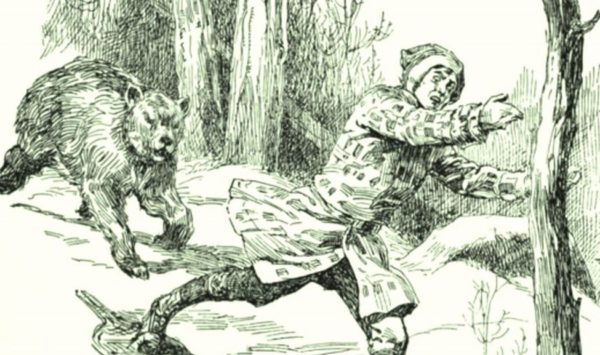
******************************************************************************************************************************** Brownstone Detectives investigates the history of our clients’ homes. The story you are about to read was composed from research conducted in the course of one of those investigations. Do you know the history of YOUR house? ******************************************************************************************************************************** In 1914, Gilbert P. Simons was being lauded for his first book. Simons, however, was no typical writer – he was a 13-year-old Brooklyn boy who had just written and published his very own book. “Shadorok Tales,” Simons’ work, was a foundational “collection of stories by him and his cousins and friends, none of whom is a great deal older than he.” WRITING THE BOOK ON MONROE STREET The entire affair began when Simons, who “in the winter lived at 224 Monroe street (near the corner of Nostrand Avenue), and in the summer at Blauvelt, N.Y.,” was given “a printing press and type by his father on Christmas of 1912,” noted the Brooklyn Daily Eagle. Little Simons appears to have had a leg up in his young publishing career by a father who worked for the Daily Eagle, which was Brooklyn’s newspaper of record. Simons started at first printing invitations, cards, circulars, billheads, &c., but then “the big idea of the book took hold of Gilbert and his father. “Everyone who was asked to contribute did so,” noted the Daily Eagle of the compilation volume of stories, “and soon there was enough ‘copy’ on hand to begin ‘setting it up.’” In 1915, the book was finished and printed up by the Shadorok […]
